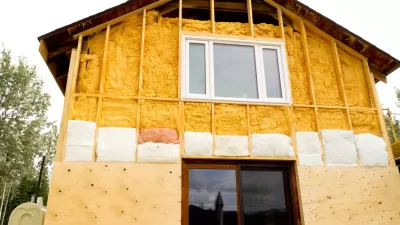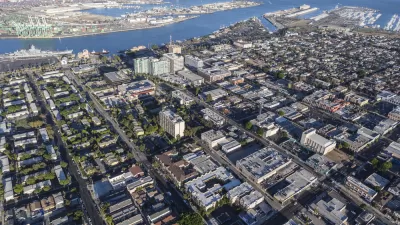Without more specific regulations, the Justice40 initiative, which requires spending 40 percent of federal funds in underserved areas, could fund projects that increase emissions and pollution.

“In President Biden’s first weeks in office, he established an environmental justice initiative called Justice40, which aims to direct benefits from federal investments to disadvantaged communities.” As Abigail Grimminger reports in Streetsblog, “The executive order listed the following as areas of emphasis: clean energy and energy efficiency, clean transit, affordable and sustainable housing, training and workforce development, the remediation and reduction of legacy pollution, and the development of critical clean water infrastructure.”
But as states and cities receive federal funding for climate projects, “states and local governments are primed to make these investments without any direction on how to ensure that 40 percent of the benefits go to the people and places most in need.” As Grimminger explains, this is because, “First, US DOT does not have the authority to meet that number because 69 percent of infrastructure funds are formula grants and have very few strings attached.”
“Second, even if the US DOT was on track, there’s a huge difference between simply spending 40 percent of money within underserved communities, and spending 40 percent to accomplish something productive or bring measurable benefits to those places,” Grimminger notes, pointing to highway expansion projects as one example of an infrastructure investment that would bring negative impacts, despite counting toward the 40 percent goal.
According to Grimminger, “The Office of Management and Budget is expected to release guidance on Justice40 soon. Fundamentally, it needs to be honest and clear about what funding they have the power to steer—and consider that in the future when they negotiate huge amounts of funding that they cannot influence at all.”
FULL STORY: Biden’s ‘Justice40’ Initiative Could Mean More Emissions, Worse Health Outcomes in Poor Areas

Trump Administration Could Effectively End Housing Voucher Program
Federal officials are eyeing major cuts to the Section 8 program that helps millions of low-income households pay rent.

Planetizen Federal Action Tracker
A weekly monitor of how Trump’s orders and actions are impacting planners and planning in America.

Ken Jennings Launches Transit Web Series
The Jeopardy champ wants you to ride public transit.

California Invests Additional $5M in Electric School Buses
The state wants to electrify all of its school bus fleets by 2035.

Austin Launches $2M Homelessness Prevention Fund
A new grant program from the city’s Homeless Strategy Office will fund rental assistance and supportive services.

Alabama School Forestry Initiative Brings Trees to Schoolyards
Trees can improve physical and mental health for students and commnity members.
Urban Design for Planners 1: Software Tools
This six-course series explores essential urban design concepts using open source software and equips planners with the tools they need to participate fully in the urban design process.
Planning for Universal Design
Learn the tools for implementing Universal Design in planning regulations.
Ada County Highway District
Clanton & Associates, Inc.
Jessamine County Fiscal Court
Institute for Housing and Urban Development Studies (IHS)
City of Grandview
Harvard GSD Executive Education
Toledo-Lucas County Plan Commissions
Salt Lake City
NYU Wagner Graduate School of Public Service





























